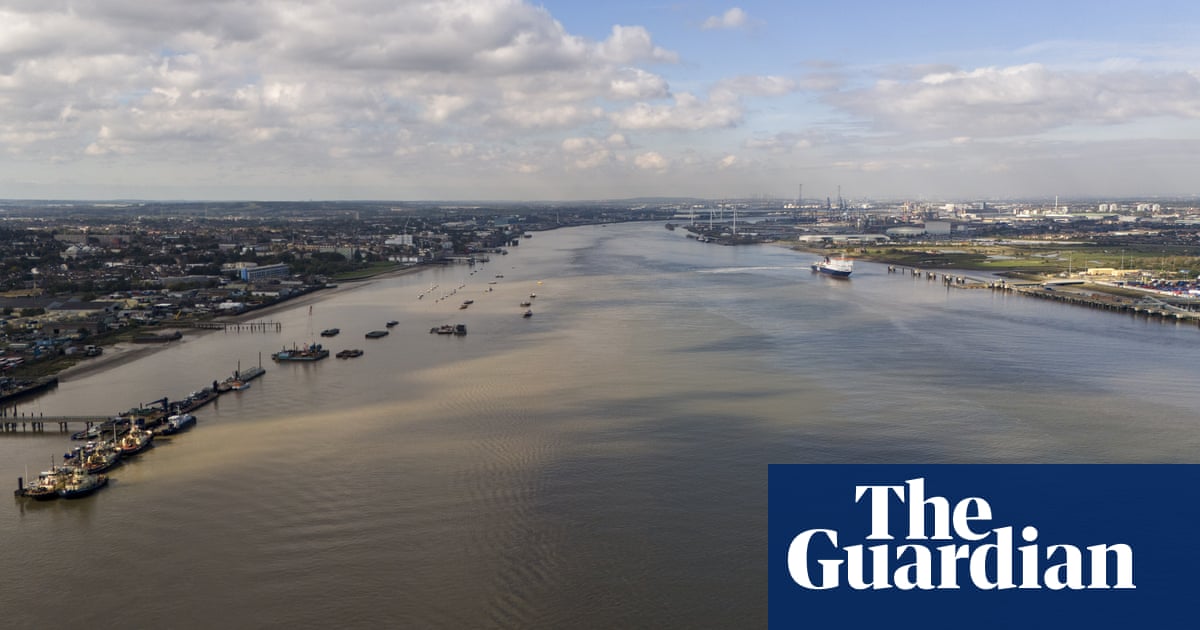Tolls on motorists to cross the Thames east ofLondoncould triple if the Lower Thames Crossing is built using private finance, campaigners have claimed.
Plans for the £9.2bn crossing weresigned off in Marchand the chancellor, Rachel Reeves, said the government was exploring options to privately finance the project, which is Britain’s biggest roadbuilding scheme.
The road tunnel betweenEssexand Kent will have tolls matching the charge for the Dartford Crossing, where M25 motorway traffic crosses the Thames.
Cars pay £2.50 to travel via Dartford, but analysis from the campaign groupTransportAction Network (TAN) suggests that tolls would need to be about £8.10, and £14 for a lorry, to cover financing and operating costs.
National Highways, which is leading the work on the crossing, said the figures were untrue and that it expected the tolls to remain in line with present levels, adjusted for inflation.
The Department for Transport declined to comment. Neither the government nor National Highways has yet set out detailed financial modelling for a privately financed toll scheme.
National Highways’ latest financial statement said thelong-delayed crossingwould cost at least £9.2bn, of which £1.2bn has already been spent on design and planning work. The public-private option under consideration would cost £9.4bn, including £6.3bn of private investment.
Under that option, a “regulated private entity” would pay for construction and then take the toll revenue from both the Dartford and Lower Thames crossings. The heavily congested Dartford Crossing generated £221.5m in tolls and penalty charges in 2023-24, with £134.9m in operating costs.
About a 30% increase in paying traffic is expected once both crossings are open and, according to TAN’s analysis, a £6.3bn investment would need to charge significantly higher tolls to cover the annual running costs and debt financing.
Chris Todd, the director of TAN, said: “Politicians have given the impression that building the Lower Thames Crossing will be pain-free. In addition to the construction chaos, the huge drain on the public finances, the cost of private finance is likely to be high.
“On even the cheapest PFI [private financial initiative] deal, the tolls at Dartford and on the new crossing will have to treble,” said Todd. “That’s a huge hit for the travelling public. Most people will still have to use the Dartford Crossing yet will be paying three times what they are now, for very little noticeable benefit.”
National Highways dismissed the analysis as purely speculative. A spokesperson said: “These numbers are untrue. As the planning application for the project made clear, charges will be applied at the same rate as the Dartford Crossing.”
While environmental campaigners argue that the Lower Thames Crossingwill worsen pollution and congestion, business and logistics groups have welcomed the formal approval granted in March by the transport secretary, Heidi Alexander, after many delays.
Sign up toBusiness Today
Get set for the working day – we'll point you to all the business news and analysis you need every morning
after newsletter promotion
The project will comprise 14 miles of road, including 2.6-mile tunnels under the Thames near Thurrock, Essex, allowing more cars and HGVs to travel to and from Channel ports via the M25 east of London.
Declan Pang, the policy director of the Road Haulage Association, said it was a “critical infrastructure project to ease congestion and improve freight journey reliability”, but added: “It’s essential that tolls are kept to a minimum to avoid placing further financial strain on hauliers and ensure the route is used effectively.”
Natalie Chapman, the head of public affairs at Logistics UK, said the approval of the crossing was “excellent news” given the delays to traffic at Dartford. She added: “Industry recognises that road charges are necessary to fund new infrastructure, but tolls need to be reasonable, as industry pays disproportionately more towards construction costs than private road users.”
Many vehicles have, however, been charged substantially more to cross the Thames since similar mirror tolls were enforced last month onthe new Silvertown tunnel, a mile-long crossing in east London, and the nearby Blackwall tunnel, which was previously free to use.
Transport for London said the tolls, of £4 for a car, were needed on both tunnels to deter traffic from taking an alternative cheaper route.
